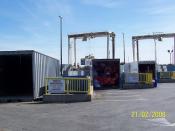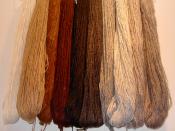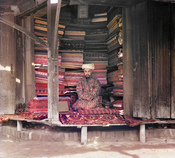JAPAN
I.Introduction
General Business Environment
Japan imports large amount of textiles and clothing products and this trend has increased over the long term. Japan has no experience of using safeguard measures pursuant to MFA (Multi-lateral Fiber Agreement) and ATC (Agreement on Textiles and Clothing).
The recent situation in the Japanese textile and clothing industry is characterized by the fact that imports, most of which are apparel and clothing products, have been expanding more rapidly since 1999. Imports recorded high growth of 14% in 1999, and 15% in 2000. In 2001, imports still increased 1.9% compared with the previous year.
The import penetration rate of all textiles and clothing products has risen almost constantly, and reached 67.4% in 2001.
Due to this sharp increase in imports, the production of the domestic textile and clothing industry has declined greatly. At the same time, the numbers of employees and corporations have also decreased.
Reference 1: Trends in Exports, Imports and Import Penetration Rate for Textiles and Clothing Products (Unit: thousand tons)
@ @ @ @ @ @ @ @ @Exports @ @ @ @ @Imports
1998 @ @ @ @ @ @ @458 1,422
1999 476 1,627
2000 489 1,869
2011 482 1,904
Reference 2: Import Penetration Rate
1998 55.4%
1999 60.2%
200064.6%
200167.4%
Note: In calculating the Import Penetration Rate, the product volume is converted into weight of fiber.
Reference 3: Trends in Internal Production of Textiles and Clothing
(1995= 100)
1998 1999 2000 2001
Index of Production 84.9 79.6 75.2 68.9
The Role and Position of the Textile and Clothing Sector in the Japanese Economy
The textile and clothing industry is one of the key industries in Japan. Employment in the textile and clothing industry in Japan accounts for 7% of total manufacturing employment. The textile and clothing sector, including manufacturing,



Very informative...
I love the country of Japan, so this was a treat for me to read. I never realized just how much stuff they produced. There was a a bit of information overload there, however. It sounded a little like a textbook, but it was very well written. Bravo!
4 out of 5 people found this comment useful.